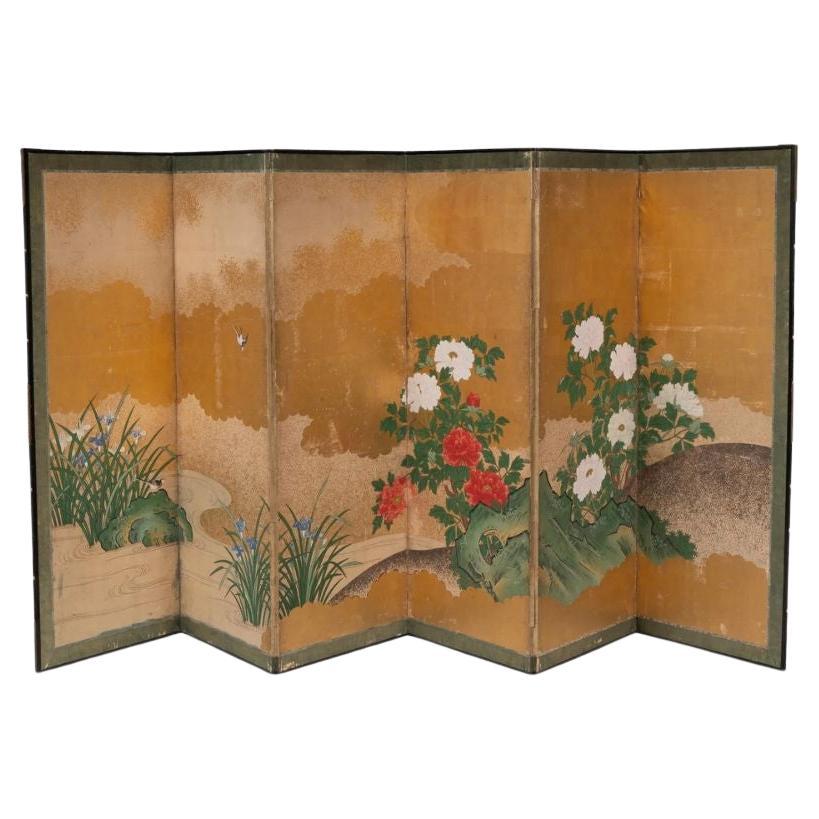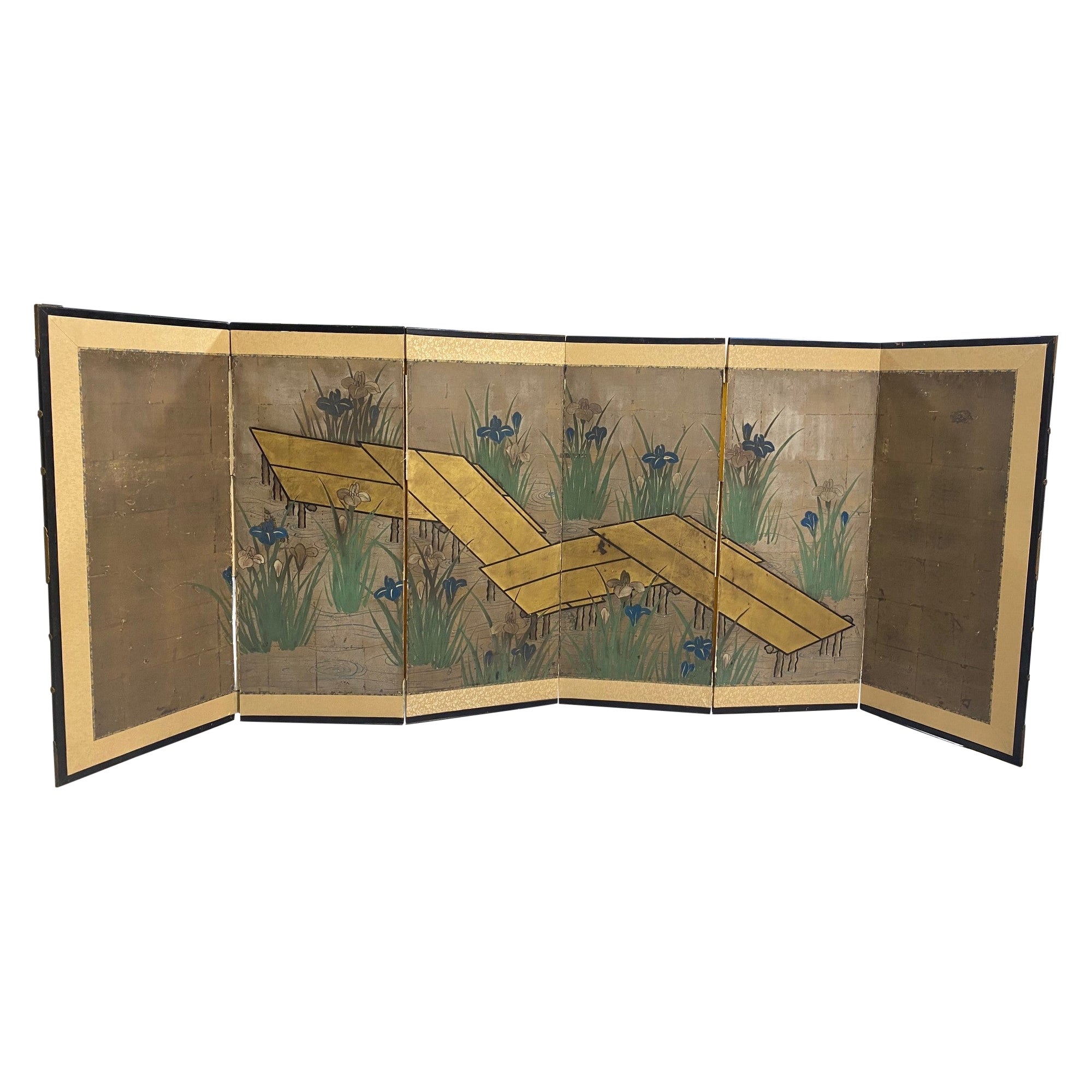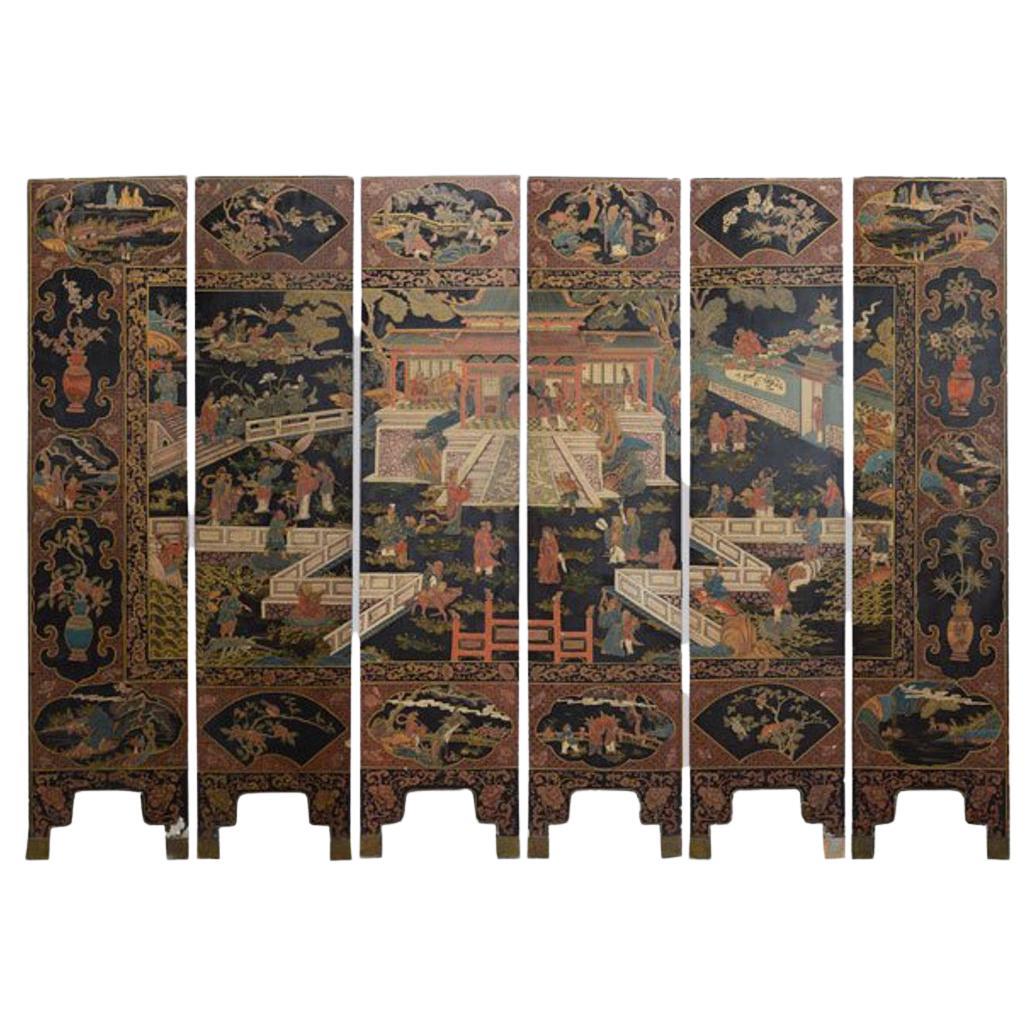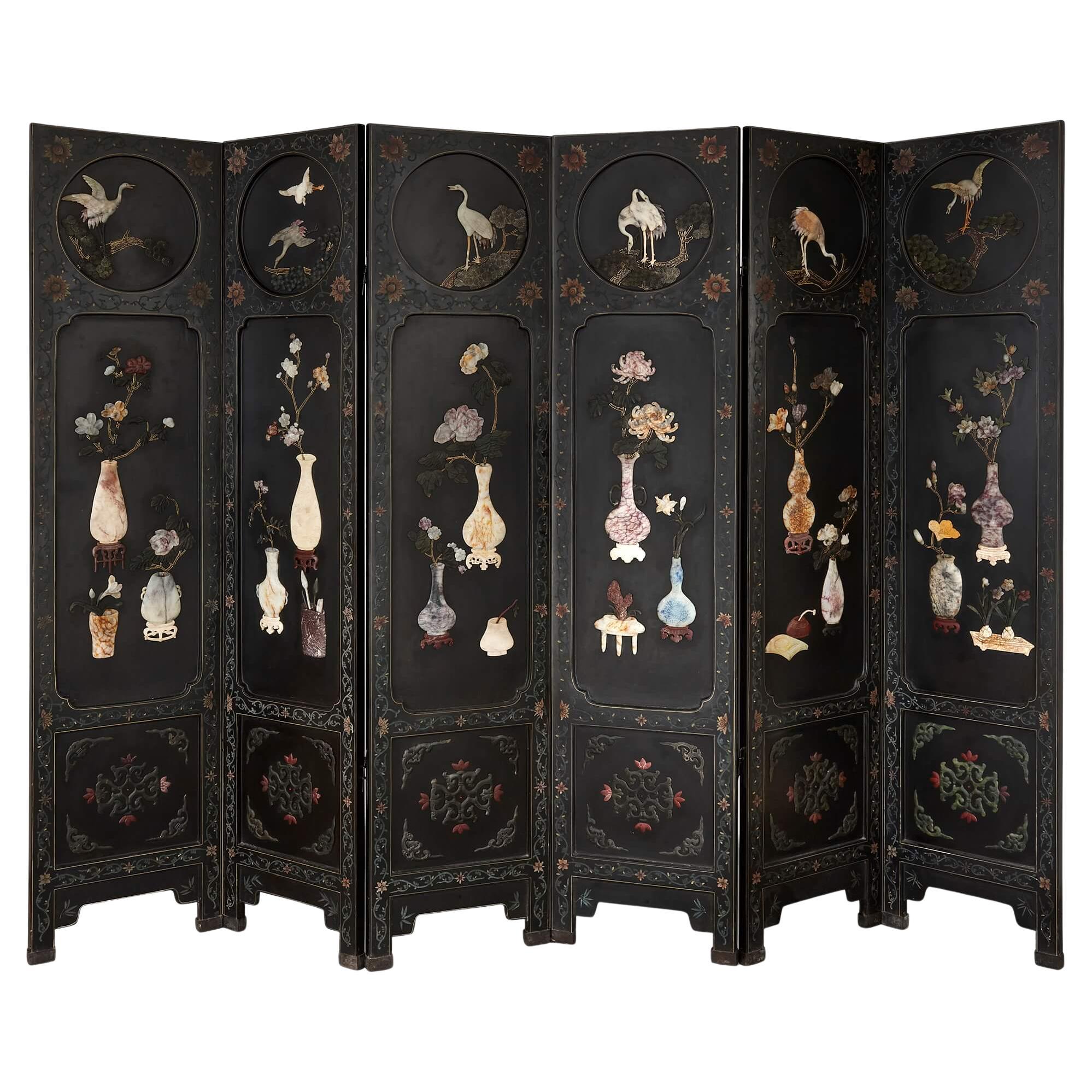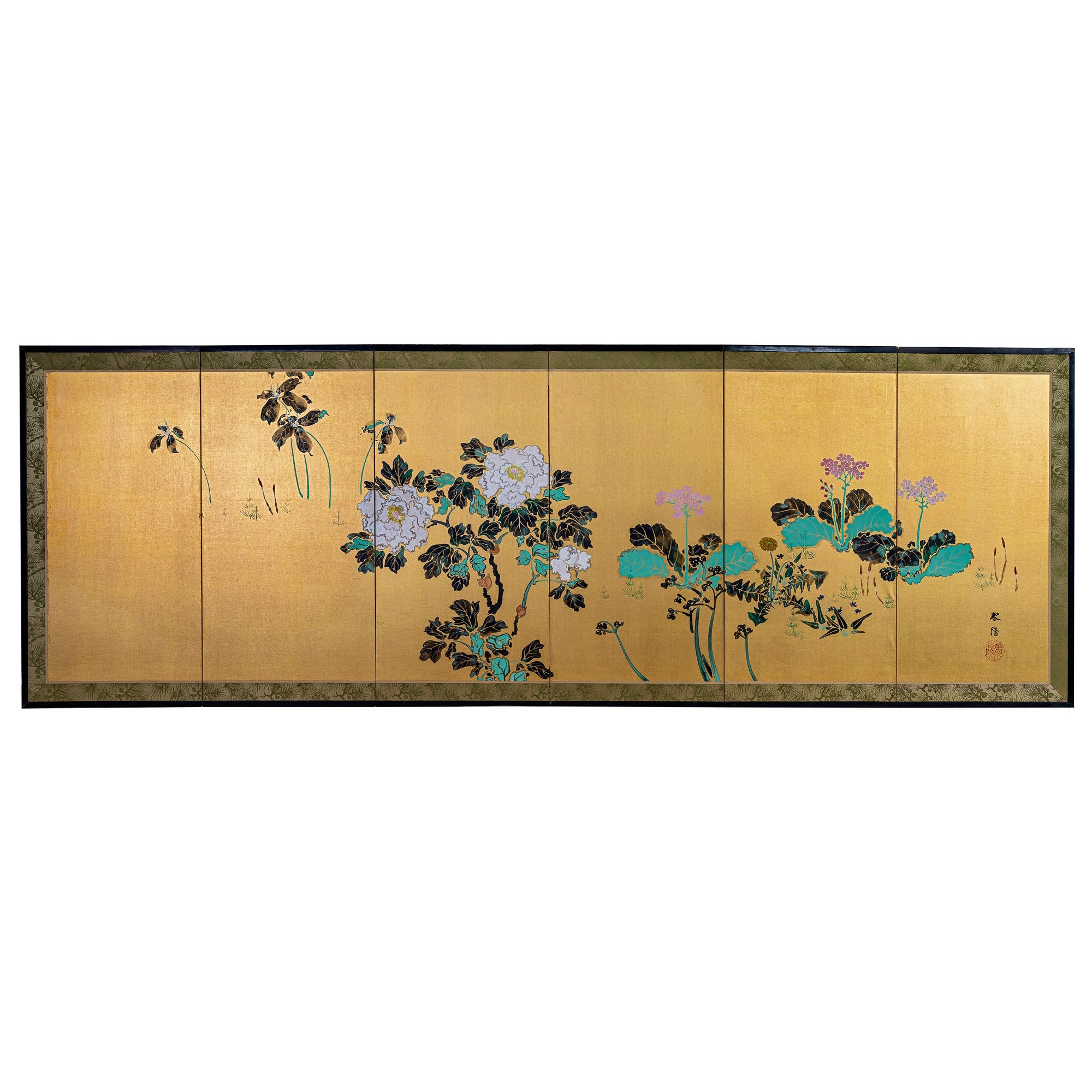Items Similar to Pair of Six-Panel Folding Screens with Peonies and Other Flowers
Want more images or videos?
Request additional images or videos from the seller
1 of 6
Pair of Six-Panel Folding Screens with Peonies and Other Flowers
About the Item
A pair of six-panel folding screens with peonies and other flowers
19th century
Each 72.5 by 241 cm
Small and elegant screens with an ideal scene depicting peonies and other flower species among hay bundles.
- Dimensions:Height: 28.55 in (72.5 cm)Width: 94.89 in (241 cm)Depth: 0.79 in (2 cm)
- Materials and Techniques:
- Place of Origin:
- Period:
- Date of Manufacture:circa 1850
- Condition:
- Seller Location:Milano, IT
- Reference Number:1stDibs: LU4250227312072
About the Seller
5.0
Recognized Seller
These prestigious sellers are industry leaders and represent the highest echelon for item quality and design.
Established in 2005
1stDibs seller since 2018
10 sales on 1stDibs
Typical response time: 2 hours
- ShippingRetrieving quote...Ships From: Milano, Italy
- Return PolicyA return for this item may be initiated within 7 days of delivery.
More From This SellerView All
- Pair of Japanese Two-Fold Screens with Flower Arrangements and Rare BirdsLocated in Milano, ITKaramono with flower arrangements and rare birds Edo period, 18th century Pair of two-panel folding screens Ink, colors, gofun and gold leaf on paper Each 170 by 165 cm ...Category
Antique 18th Century Japanese Paintings and Screens
MaterialsPaper
- Pair of Japanese Screens with Flowers of the Four Seasons, 19th CenturyLocated in Milano, ITThis pair of screens belongs to a genre of lyrical paintings of flowers, grasses, and other plants that flourished around the middle of the 17th century and became a specialty of the Sôtatsu studio. The use of a rather complex composition of clusters of flowers and the puddling of ink was initiated by Tawaraya Sôtatsu, the founder of the Rimpa School, who was active from 1600 until 1642. The screens are abstract and decorative but there is, at the same time, a keen sense of naturalism not only in the attention to accurate detail but in the profusion of vegetation. The passage of the year is symbolized by the variety of plants that bloom in different seasons. The tarashikomi - here used on leaves, petals and trunks - is a Classic Rinpa technique in which pale black ink or a color is brushed onto an area of a painting and then either darker ink, or the same or a contrasting color, is dropped into the first before it has completely dried, creating an effect of pooled colors with softly blurred edges. Its delicacy, preciousness, and effeminacy are identified with the over-refinement of its patrons, while the vigor, monochromatic discipline, sharp observation, and virile forms of the Kano school are a testament to the vitality of the rising warrior class. The plants are almost all identifiable: in the summer-spring part, you can find wheat, buttercups, irises, begonias, hydrangeas, coral bells...Category
Antique 19th Century Japanese Paintings and Screens
MaterialsPaper
- Japanese Folding Screen with a Spring Landscape, Kano School, 19th CenturyLocated in Milano, ITThe scene is dominated by a plum tree in bloom under which a couple of paradise birds is courting. The screen is crossed by a luxuriant creek, a typical feature of the springtime.Category
Antique 19th Century Japanese Paintings and Screens
MaterialsPaper
- Japanese Two-Panel Screen with Scenes at the Pleasure Quarters, 18th CenturyLocated in Milano, ITIn the pleasure districts, the stringent codes were meant to be forgotten. In this painting, some clients are watching from outside the teahouse, while some are entering, one of them...Category
Antique 18th Century Japanese Paintings and Screens
MaterialsPaper
- Painting by Maeda Josaku (Japan, 1926 – 2007), Paysage Humain N° 14, 1960Located in Milano, ITSigned: Josaku Meda. 60. Singed on the back: "Paysage humain" N°14 / 7.1960 / Josaku MAEDA / à Paris Exhibitions: Turin (Italy), Gissi Gallery, Collettiv...Category
20th Century Japanese Paintings and Screens
MaterialsCanvas
- Shibata Zeshin ‘1807-1891’, BarleyLocated in Milano, ITMedium: Hanging scroll; ink and pigments on silk Signature: Zeshin Seal: Tairyukyo Date: circa 1880 Painting size: 98 x 20 cm Mounts size: 182 x 32 cm Shibata Zeshin...Category
Antique Mid-19th Century Japanese Paintings and Screens
MaterialsPaper
You May Also Like
- Six Panel Japanese Peony and Sparrow Scene ScreenLocated in Locust Valley, NYA six panel Japanese screen depicting a landscape scene peonies and sparrows against a gold backdrop of clouds and sky. The colors are vibrant with red and white peonies, green grass...Category
20th Century Paintings and Screens
MaterialsGold Leaf
- Japanese Six-Panel Meiji Screen Flowering Peonies and ButterfliesLocated in Rio Vista, CAStunning Japanese Meiji period six-panel large screen. Featuring blooms of spring flowering white, pink, and red peonies with butterflies over a gilt background. Made in the Nihonga ...Category
20th Century Japanese Meiji Paintings and Screens
MaterialsBrass
- Japanese Asian Six-Panel Folding Byobu Screen Landcape Bridge with Iris FlowersLocated in Studio City, CAA gorgeous six-panel Japanese Byobu folding screen depicting a nature lake/landscape scene with a water walkway/angular bridge and blossoming iris flowers - perhaps an homage to the famed Irises screens...Category
Antique 19th Century Japanese Edo Paintings and Screens
MaterialsGold Leaf
- Chinese Coromandel Six-Panel Folding Screen, ChineseLocated in Cypress, CAFine antique Chinese hand painted coromandel 6 Panel Screen.20th century possibly earlier. Each panel is hand brushed with gesso before it is being hand painted to give the three dim...Category
20th Century Chinese Paintings and Screens
MaterialsGesso, Wood
- Large six-panelled Chinese hardstone and lacquered folding screenLocated in London, GBLarge six-panelled Chinese hardstone and lacquered folding screen Chinese, Early 20th Century Closed: height 183cm, width 40.5cm, depth 18cm Opened: height 183cm, width 243cm, depth ...Category
Early 20th Century Chinese Qing Paintings and Screens
MaterialsPrecious Stone, Lacquer
- Japanese Six Panel Screen, Peonies and Young Growth on Gold SilkLocated in Hudson, NYRimpa floral scene. Pigment on gilded silk, signature and seal read: Hattori Shunyo. Bold colors and strong design elements combined with the trademark tarashikomi (diluted elements created when water is applied to the surface before or after pigments causing them to diffuse) exhibit the artists deep devotion to this important Japanese painting tradition. Notes about artist: Hattori Shunyo (b. 1883) was an artist from Kyoto who graduated the (now) Kyoto Municipal University of Art and fell under the circle of Yamamoto Shunkyo...Category
Early 20th Century Japanese Paintings and Screens
MaterialsBrocade, Silk
Recently Viewed
View AllMore Ways To Browse
Antique Other
Antique Furniture Other
Other Antique Furniture Other Antique Furniture
Panels Of Flowers
Folded Paper Furniture
Six Panel
Small Screen
Pair Folding
Folding Screen Used
Pair Of Art Panels
Antique Paper Flowers
Panel Folding Screen
Panel Fold Folding Screens
Paneled Folding Screens
Brown Folding Screen
Six Fold
Antique Folding Screen Antiques
Antique Folding Screen
